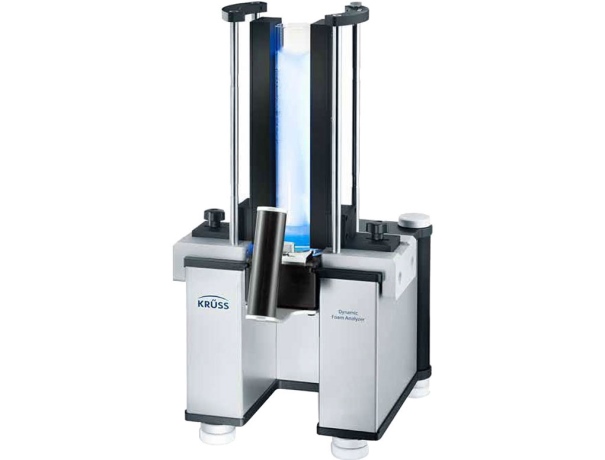Kruss Dynamic Foam Analyzer is a versatile tool for characterizing and optimizing foams in various applications, helping industries produce products with desired foam properties and performance. This technology is crucial for ensuring the stability, texture, and consistency of foam-based products, ultimately enhancing their market appeal and functionality.
Foams are dispersions of gas bubbles in a liquid or solid matrix and are commonly encountered in various industries, including food and beverage, pharmaceuticals, cosmetics, and materials science. Understanding the dynamic behavior of foams is essential for optimizing product quality and performance.
Measurement of Dynamic Foam Properties:
The Kruss Dynamic Foam Analyzer uses various techniques to characterize and measure the dynamic properties of foams, including:
Foam Height vs. Time: The instrument measures the change in foam height over time, which provides information about foam stability. The height decay can be used to assess how quickly a foam collapses.
Liquid Fraction vs. Time: This parameter measures the liquid drainage from the foam. It is crucial for understanding the rate at which liquid drains out of the foam, impacting the product's texture and performance.
Bubble Size Distribution: The analyzer can provide information about the size distribution of bubbles in the foam. This data helps in assessing the foam's texture, as smaller bubbles typically result in a smoother and more stable foam.
Rheological Properties: The instrument can also evaluate the foam's rheological behavior, such as its elasticity and viscosity. This information is vital for predicting the foam's flow characteristics and its suitability for various applications.

Applications:
The Kruss Dynamic Foam Analyzer finds applications across various industries where foam stability, texture, and performance are critical:
Food and Beverage Industry: In the food industry, foams are used in a wide range of products, including beverages, desserts, and confectionery. The Dynamic Foam Analyzer can help optimize foam stability and texture in products like whipped cream, meringue, and beer.
Pharmaceuticals: Foams are often encountered in pharmaceutical formulations, such as oral syrups and creams. This instrument can be used to assess the stability and consistency of these formulations.
Cosmetics: Cosmetics, such as shaving creams and foam cleansers, rely on stable and luxurious foams. The analyzer ensures the quality and performance of these products.
Materials Science: The instrument is used to study foams in materials science, where they play a role in various applications like insulation, composite materials, and porous structures.
Oil and Gas Industry: Foams are used in enhanced oil recovery and drilling fluids. The analyzer helps in understanding the stability and performance of foams used in these applications.
Quality Control: Manufacturers use the Dynamic Foam Analyzer for quality control, ensuring that their foam-based products meet specific standards and maintain consistent quality over time.